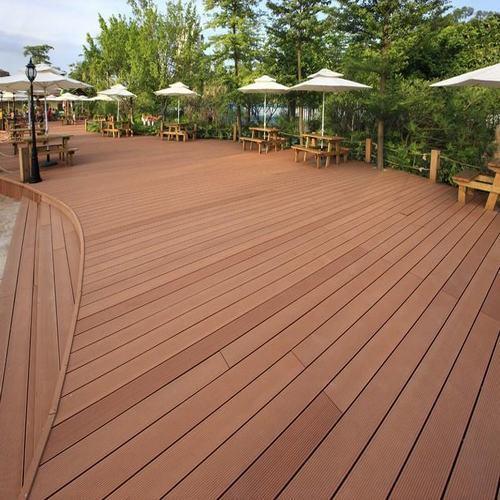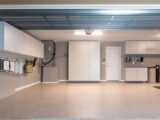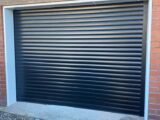
WPC Flooring vs. Laminate: Which is Better for Your Home?
April 11, 2025When it comes to selecting flooring for your home, the options can seem endless. Among the most popular choices are WPC flooring dubai and laminate. Both are cost-effective, stylish, and practical alternatives to hardwood, but they come with different features that may make one more suitable for your needs than the other. If you’re trying to decide between WPC and laminate flooring, here’s an in-depth comparison of both to help you choose the best option for your home.
What Is WPC Flooring?
WPC flooring is a type of engineered vinyl flooring that combines wood fibers and plastic polymers to create a durable and water-resistant flooring solution. The core of WPC flooring consists of a blend of wood flour (usually made from recycled wood or bamboo) and plastic. The result is a flooring product that mimics the appearance and texture of wood, while offering superior resistance to water and wear.
One of the key advantages of WPC flooring is its ability to handle moisture better than traditional hardwood or laminate flooring. This makes it an excellent choice for areas like bathrooms, kitchens, and basements where moisture can be a concern.
What Is Laminate Flooring?
Laminate flooring is another popular alternative to hardwood. It consists of multiple layers, including a high-density fiberboard (HDF) core, a printed image layer that mimics wood, and a durable wear layer on top. While laminate flooring can look like real wood or stone, it’s actually made from synthetic materials, making it a more budget-friendly option.
Laminate is known for its durability, ease of installation, and variety of styles. However, it does have some limitations when it comes to moisture resistance, which can affect its performance in certain areas of the home.
Key Differences Between WPC and Laminate Flooring
Durability
Both WPC and laminate flooring are durable options, but they handle different types of wear and tear in different ways.
- WPC Flooring: WPC flooring is highly durable due to its waterproof nature. It can withstand moisture, spills, and humidity without warping or swelling, which makes it ideal for high-moisture areas. It also has a soft, cushioned feel underfoot due to its composite core, which can reduce noise and make walking more comfortable.
- Laminate Flooring: Laminate flooring is also quite durable and resistant to scratches, stains, and fading. However, it is more susceptible to water damage than WPC. If moisture seeps into the seams or edges of laminate planks, they may warp or swell over time. This makes laminate a less ideal option for areas with high humidity or frequent water exposure.
Verdict: If you’re looking for a flooring option that’s more resistant to moisture and water damage, WPC flooring is the better choice. Laminate can handle light spills, but WPC flooring offers more long-term peace of mind in wet areas.
Aesthetic Appeal
When it comes to aesthetics, both WPC and laminate flooring can mimic the look of real wood or stone. However, there are some differences in terms of texture, appearance, and finish.
- WPC Flooring: WPC floors are known for their high-quality appearance. The printing technology used on WPC surfaces often results in a more realistic look and texture, closely resembling natural wood grains. Additionally, WPC floors have a more comfortable and softer feel underfoot compared to laminate flooring.
- Laminate Flooring: Laminate floors also have a realistic wood or stone appearance, thanks to advanced printing techniques. However, while laminate can look impressive from a distance, the texture may not be as realistic as WPC, especially when you touch the surface. Laminate floors can sometimes feel a bit harder and colder underfoot, lacking the softness of WPC.
Verdict: For a more realistic, wood-like appearance with a softer, more comfortable feel underfoot, WPC flooring wins. Laminate can still look great, but WPC often provides a more luxurious finish.
Moisture Resistance
One of the standout features of WPC flooring is its moisture resistance.
- WPC Flooring: As mentioned earlier, WPC is designed to be waterproof, which makes it ideal for bathrooms, kitchens, and basements. Even if water spills on the surface or seeps into the seams, WPC won’t warp, buckle, or swell. This makes it a great choice for areas with high moisture levels or where spills are frequent.
- Laminate Flooring: While laminate flooring is relatively moisture-resistant on the surface, it is not entirely waterproof. Prolonged exposure to water can cause the seams to swell and the boards to warp. Therefore, laminate is better suited for areas that don’t experience constant moisture, such as living rooms and bedrooms.
Verdict: WPC flooring is the clear winner when it comes to moisture resistance, making it the best choice for areas exposed to water or humidity.
Cost
- WPC Flooring: Generally, WPC flooring is more expensive than laminate flooring. The advanced technology and materials used in WPC, along with its durability and water resistance, contribute to its higher cost. However, considering its longevity and performance, the higher upfront cost may be worthwhile for some homeowners.
- Laminate Flooring: Laminate is typically more affordable than WPC. It provides an excellent budget-friendly option for those who want the look of hardwood without the high price tag. The lower cost makes laminate an attractive choice for those on a budget or for large projects.
Verdict: If cost is your primary concern, laminate flooring is the more economical option. However, if you prioritize durability, moisture resistance, and long-term performance, the higher cost of WPC flooring may be a better investment.
Installation
Both WPC and laminate flooring are designed for easy installation, often featuring a click-lock system that eliminates the need for glue or nails. However, the installation process may vary slightly depending on the product and the area.
- WPC Flooring: WPC flooring is relatively easy to install and can be done as a DIY project by most homeowners. Its interlocking system ensures a tight fit and helps prevent gaps that could allow moisture to seep in. Some WPC flooring options also have an attached underlayment, making the installation process even more seamless.
- Laminate Flooring: Laminate is also easy to install with a click-lock system. It can be installed over most existing floors without the need for glue or nails. However, laminate doesn’t typically come with an attached underlayment, so you may need to purchase one separately.
Verdict: Both flooring types are easy to install, but WPC may have a slight edge if you want a quicker and more efficient installation with less hassle.
Final Thoughts: Which Is Better for Your Home?
WPC flooring dubai and laminate flooring ultimately depends on your specific needs and preferences. If you’re looking for a moisture-resistant, durable, and comfortable flooring solution that mimics the look of wood, WPC flooring is the better option. It’s ideal for high-humidity areas, offers superior comfort, and provides a realistic wood appearance.







